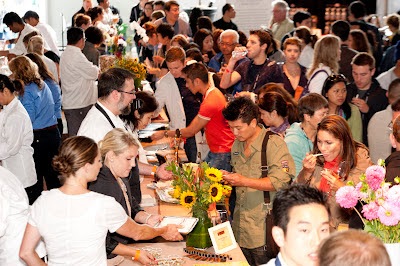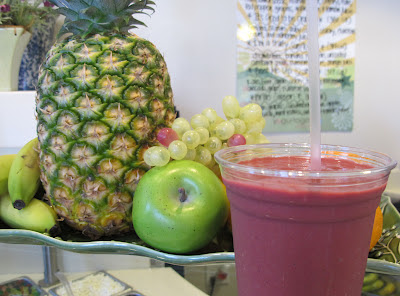Sure, other cities have big food and wine events such as the Miami Food & Wine Festival or the Aspen Food & Wine Classic, but San Francisco has the best one of them all - SF Chefs. Why? Because unlike the others that last a weekend or a few days, the SF Chefs has grown to cover weeks! There are over a month's worth of events that started in June and run all the way through the final, big weekend of August 3-4.
The events run the entire gamut from celebrity chef dinners, to chef competitions, classes on food artistry, and the hottest tickets in town - the Grand Tasting Tent events during the final weekend. Two years ago I was lucky enough to go to a couple of the daytime events (I still haven't been able to snag a tasting event, too poor). I went to a cooking demonstration with Daniel Scherotter, from the Italian restaurant Palio D'Asti. I was able to interview Scherotter afterwards. I was also able to attend an interesting class on Pairing Produce & Wine by Color. Even though I don't drink, I learned a bit and could taste the difference even on my very untrained tongue.
This year I've been able to snag a couple more classes that I'm looking forward to. On August 2nd I'll be going to is Channeling Scandinavia and Eastern Europe. Scandinavian food is an upcoming trendy cuisine and includes a lot of fermented foods. Since I've been getting into fermenting things myself, it should be interesting. I hope there is some tasting to be had. The second class on August 3rd is Something Farmed, Something Foraged, Something New. These days chefs need to know their ingredients intimately and that is especially true with the abundance in Northern California. Not only do chefs get friendly with their local farmers and suppliers, but they also go out and forage while hiking on their time off. Classes such as these cost $35, but you can get a 20% discount on all SF Chefs events if you are a VISA Signature card holder.
SF Chefs supports the Golden Gate Restaurant Association Scholarship Foundation. The
foundation grants financial scholarships to students from the Bay Area
entering culinary and hospitality programs.






 Bananas
Bananas














